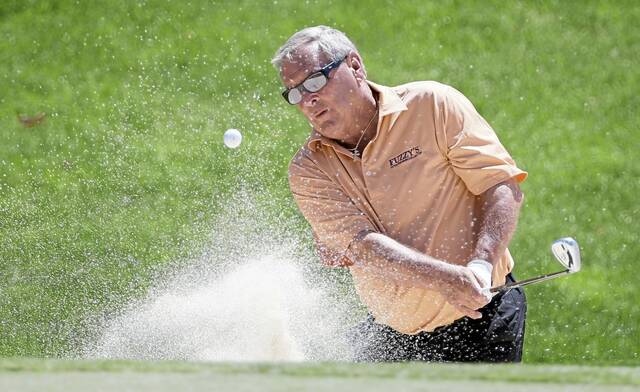By now, much has been said and written about the 5-inch rough at Oakmont Country Club, as well as the basketball court-like greens, shoulder-deep bunkers and wispy grass ditches.
All will impact play as players begin the 125th U.S. Open championship Thursday at Oakmont.
But how much?
USGA officials described the “levers” they can pull in setting up a U.S. Open championship course Wednesday afternoon. Expect each of those areas at Oakmont Country Club to be leveled up to the max if the weather cooperates and gets the course as fast and firm as possible.
“We love all of our U.S. Open venues, and most of them have three or four things that are quite unique,” said John Bodenhamer, the USGA’s chief championship officer, “levers that we can pull and the way that we can set up the golf course and present it to the world’s greatest players. We like to think Oakmont has six of those.”
It starts with the architecture and routing, which, through restoration the past couple of years by architect Gil Hanse, has returned to the original vision of founder/architect Henry C. Fownes in 1903. The course has gotten a bit longer — by 153 yards since the 2016 U.S. Open — but the bulk of the landscape remains the same and quite unique, all the way down to the bridges that cross the Pa. Turnpike.
“It’s magnificent,” Bodenhamer said. “When you go and stand out there and look at this property and what Fownes did, his only golf course, it’s brilliant.”
Bodenhamer then mentioned pure gravity and how the ball flies throughout the course. Then there’s the much-discussed rough, which will play between 4 and 5 inches in the championship rounds. Players have tested it during practice rounds Monday through Wednesday, trying to figure out ways to advance the ball, rather than pitch back into the fairway.
“I think this golf course, you have to be just a fraction more strategic, especially with the rough (being) so long,” defending U.S. Open champion Bryson DeChambeau said.
The bunkers offer a risk and reward. Players will attack some and avoid others at all costs, the Church Pews on Nos. 3 and 4 being a prime example. Some greenside traps will provide relief as players will be able to spin balls from the sand and get them to stop on unforgiving greens. Those around the fairways are another story and could force players to play sideways back into the short grass.
“There’s so many bunkers everywhere, and they’re deep, and it’s a real penalty when you hit the ball in the bunkers here,” said world No. 1 Scottie Scheffler.
Another hazard that defines Oakmont is the ditches strategically placed around the course, especially on the 10th hole, where it intersects the fairway.
“Oakmont has them, and it’s magnificent,” Bodenhamer said.
The USGA also will pay close attention to the putting surfaces, which could play between 14 and 15 on the Stimpmeter as the week progresses, depending on weather conditions. Officials also will tinker with hole placements to make the undulating greens even more of a challenge.
“They’ve always been the fastest in the game,” Bodenhamer said. “They’ve always been the most treacherous, and they’re spectacularly special.”
Bodenhamer cited his sixth lever as the psychological aspect of Oakmont, saying it will require players to use all “15 clubs,” including the one between their ears. It will be a constant battle against the intimidation level the course possesses.
“Oakmont is relentless. There’s no letup. It’s a grind. That’s the U.S. Open,” he said. “There are limited opportunities to catch up once you get behind. So that element of ‘I’ve got to hit the perfect shot and make birdie’ really gets you behind the curve ball more and more.”
Whoever adjusts best to those six USGA levers likely will be celebrated Sunday on the 18th green as he lifts the U.S. Open championship trophy.








